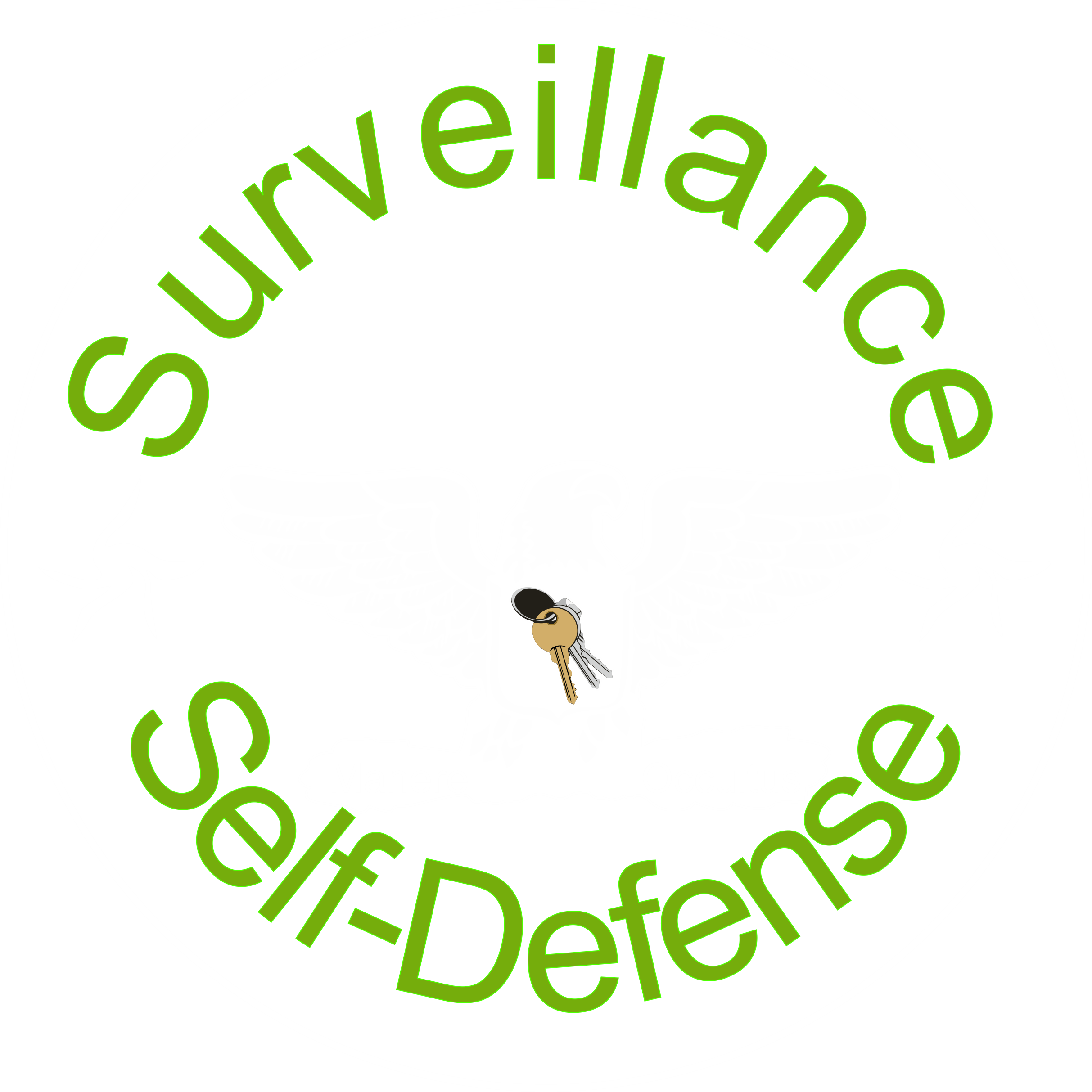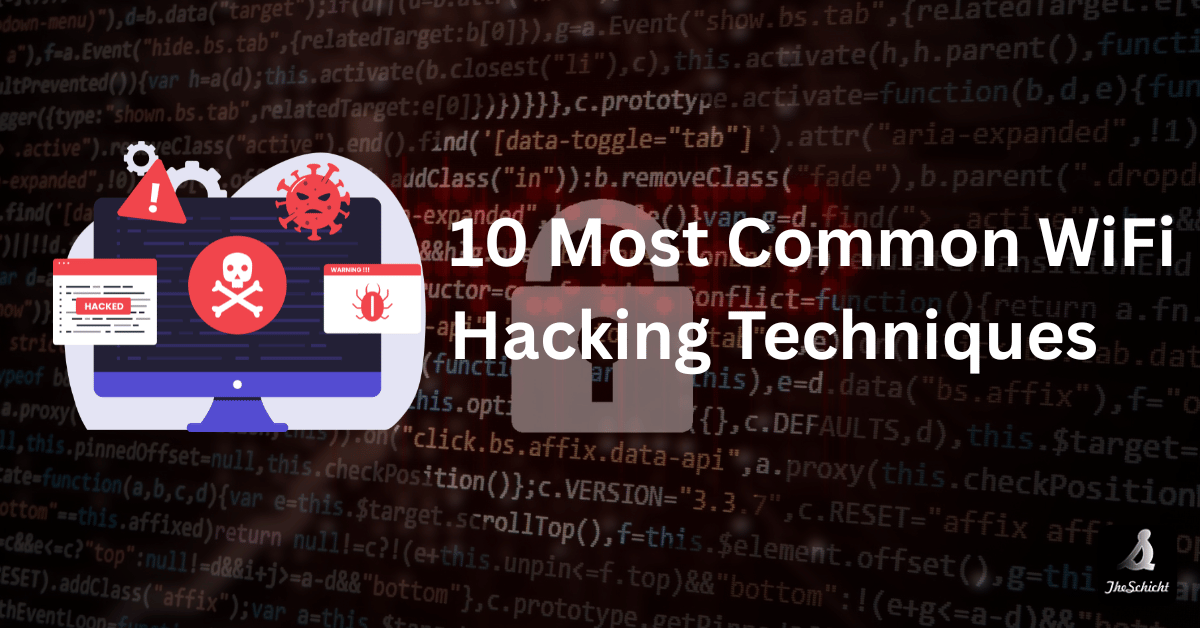Teach Your Kids Surveillance Self-Defense (A Calm Privacy Guide)
You probably ask yourself in the quiet moments, “Is my child being watched online? Am I overreacting?”
You’re not. In 2026, apps, games, sites, smart speakers, and even toys can quietly track your child’s location, habits, and interests, often by default.
Surveillance self-defense simply means teaching your child how to protect their data, location, and identity from apps, sites, and devices that watch and track them. It’s not about turning your home into a bunker or scaring your kid off the internet. It’s about giving them age-appropriate skills and calm habits so they can move through connected life with awareness, not fear.
In this guide, you’ll get a clear picture of how kids are watched today, from grade school to teens, and what that looks like in real life. You’ll see age-based tips, word-for-word scripts you can use, simple family rules, practical tools that fit current 2025 privacy laws, and quick FAQs for the tricky moments.
You’re not your child’s police officer; you’re their coach. By the end, you’ll know how to talk about privacy in a steady, non-scary way that helps your child feel protected, not paranoid.
What Surveillance Self-Defense Is And Why Your Child Needs It
Surveillance Self-Defense is not a tech course. It is a set of smart habits that help your child notice who is watching, what is being collected, and how to stay in control. You are not only worried about strangers. You are also dealing with apps, games, schools, and companies that track kids by default.
You use phones, smart speakers, school laptops, and social media every day. Your child does too. Surveillance self-defense is how you turn all of that from a blur of hidden tracking into something your child understands and can handle with calm, simple steps.
How Kids Are Quietly Tracked Every Day (In Simple Words)
Your child is tracked in many small ways that feel normal. That is why it is easy to miss. When you point these out in simple, concrete terms, your child can start to see patterns and practice surveillance self-defense.
Here are everyday tracking habits in kid language:
- Location in apps: Many apps want to know where your child is.
Example: When a weather app or a game says, “Can we use your location?”, it is not just for one moment. It may log where the phone is all day. - Games and chat logs: Popular games save usernames, friends, and conversations.
Example: When a game knows what level your child stopped on, who they played with, and every chat they sent, that is tracking. - School platforms: School laptops and learning sites record clicks and time spent.
Example: When a teacher can see that your child opened a quiz, clicked three questions, then closed it, that history is stored somewhere. - Smart TVs and speakers: Devices in your living room listen for wake words, then record short clips.
Example: When your kid says, “Play funny cat videos,” the device remembers that voice request to suggest more videos and sometimes for ads. - Cookies on websites: Sites drop tiny files that follow your child as they browse.
Example: When a site remembers what your child clicked, then shows the same toy on other sites, that is a cookie at work.
You do not need to explain every technical detail. Your child only needs to see the pattern: if a device remembers what you did yesterday, someone is tracking something today. That awareness is the first step in surveillance self-defense.
The Real Risks To Kids From Surveillance, Not Just Scary Stories
Not all tracking turns into a crime story. The real risks are often quieter and more common. When you name them clearly, your child can spot them and make better choices.
Some real, everyday risks are:
- Targeted ads that feel personal
Your child sees ads that match their games, shows, or searches. It feels like the ad “knows” them, which makes it harder to ignore. - Pressure to buy or beg
Limited-time offers, loot boxes, and “only 2 left” banners push kids to spend or ask you for money fast. - Pressure to stay online longer
Apps and games track how long your child plays, then send notifications or rewards to pull them back in. Screen time stretches without anyone planning it. - Oversharing without thinking
Kids post selfies with school logos, team names, or street signs. That gives away real-world details to people and companies. - Strangers learning too much
A pattern of posts about favorite places, routines, and friends can give strangers a clearer picture of your child’s life than you would ever share on purpose. - Long-term digital footprints for teens
Old posts, likes, comments, and search history can be stored for years. Colleges, jobs, or future partners may see things your teen forgot in a week.
There are laws that try to help. In the United States:
- Kids under 13 have extra protection under COPPA and new state privacy laws. Companies often must ask for parent consent to collect data.
- Teens have fewer clear protections. Many apps still track their chats, clicks, and locations and use that for ads or to keep them hooked.
These laws help, but they do not cover every app, school tool, or device. Surveillance Self-Defense fills the gap by giving your child skills, not just rules. When you both understand the real risks, you can guide them with a calm plan instead of guesswork or panic.
Why Fear-Based Talks Backfire And What To Do Instead
When you lead with fear, kids often shut down. If you say, “The internet is full of creeps,” your child may feel ashamed, scared, or judged. Many kids then start to hide mistakes, delete messages, or lie about what they do online.
That is the opposite of what you want.
A better approach is simple:
- Stay curious, not shocked
Ask, “What do you like about this app?” or “What feels annoying or weird about this game?” Curiosity tells your child, “You can talk to me.” - Use open questions
Try, “What do you think this app knows about you?” or “How would you feel if a stranger saw this photo?” You invite them to think, not just obey. - Solve problems together
When something goes wrong, say, “Let’s fix this as a team,” instead of “I told you so.” That builds trust and real learning.
Reframe how you describe the online world. Instead of, “The internet is dangerous,” try, “The internet is powerful, so you need skills to use it safely.” That small change matters. Your child feels capable, not doomed.
Surveillance Self-Defense, taught this way, is like teaching road safety. You do not say, “Cars are evil.” You say, “Cars are powerful, so here is how you cross the street and use a seat belt.” Privacy talks can feel the same. You are building your child’s confidence and sense of control, one clear habit at a time.
Age-Appropriate Ways To Teach Surveillance Self-Defense
You teach your child to look both ways before crossing the street. Surveillance Self-Defense works the same way, just for screens instead of cars. You match the lesson to their age, you keep your tone calm, and you repeat simple rules until they become habits.
You do not need a huge “internet safety talk.” Short, everyday chats in the car, while you set up a new game, or during homework time are enough. Think of yourself as a guide who adjusts the level of detail as your child grows.
Teaching Young Kids (5–8): Simple Privacy Rules Without Scary Details
For young kids, your goal is simple rules and cozy safety, not big warnings. You connect privacy to things they already understand in real life, then you gently apply it to screens.
Start with clear, concrete ideas:
- Privacy is like a closed door: Some things are only for you or for family.
- Secrets can be safe or unsafe: A surprise birthday is safe, a stranger asking where you live is not.
- Not everyone is a “friend”: Online “friends” are not the same as playground friends.
You can ground those ideas in everyday moments:
- When they close the bathroom door, say, “That’s privacy. You choose who comes in.”
- Make a secret handshake and say, “Only our family knows this. We do that with some information too.”
- If they start to shout their address in public, gently stop them and say, “We only share that with people we trust.”
To turn online tracking into kid language, you might say:
- “Some apps are very curious and want to know everything about you. Our job is to only tell them a little bit.”
- “This game likes to remember what you do. We will help it remember only what it really needs.”
For this age, keep the focus on a few concrete rules. You can even put these on a colorful card near the tablet:
- Ask before sharing names, photos, or locations
“If you want to type your name, where we live, or send a picture, you ask me first.” - Never click “allow” without a grown-up
“If a game or app pops up and says ‘allow’ or ‘ok,’ you pause and come get me.” - Only chat with people our family knows
“If a game has chat, we only talk to people you know in real life, like cousins or school friends.” - Keep passwords super secret
“Passwords are like treasure keys. You can share them with me or the other parent, but not with friends.” - Tell me if something feels weird or yucky
“If a message, picture, or question feels strange, you’re not in trouble. You just tell me so we can fix it.”
Fun tools make these ideas stick:
- Privacy superhero stories
Create a character like “Captain Privacy” who says, “Stop! Ask a grown-up before you share.” Tell a 2-minute story at bedtime where your child helps the hero decide what to share and what to keep private. - Role-play games
Pretend to be a “nosy app” that keeps asking things like, “What’s your name? Where do you live? Can I see your face?” Let your child practice saying, “I have to ask my parent first.” - Safe-sharing circle drawing
Draw a big circle on paper. Inside, help your child draw or write things that are ok to share, like favorite color, favorite animal, favorite game. Outside the circle, write things that are not for apps, like full name, address, school name.
Short scripts you can copy:
- “If a game asks you something and you are not sure, your job is to pause and come get me.”
- “Some apps are very curious, but you are the boss of your information. I’m here to help you decide what to share.”
- “We treat your name and where you live like a secret handshake. We don’t give those to apps without asking.”
At this stage, surveillance self-defense is really about pausing and asking you first. You stay close, they build trust, and the habits start to form.
Coaching Tweens (9–12): Data, Consent, And Digital Footprints
Tweens are smarter about tech than many adults, but they still think in the short term. Here, your goal is to help them see what data is, why consent matters, and how their digital footprint works over time.
Start with plain definitions:
- Personal data: “Anything that points to you.”
You can list examples: name, birthday, school, location, photos, email, phone, favorite shows, search history.
You might say:
- “When you play or watch online, apps collect little pieces of you, like your name, what you click, and how long you stay.”
Introduce consent as a daily-life rule, not just a legal term:
- “Consent means you ask and wait for a clear yes before you use or share something.”
Connect it to things they know:
- Borrowing a toy: “You ask before you take it. If they say no, you respect it.”
- Sharing a photo of a friend: “You ask, ‘Can I post this?’ and you listen to the answer.”
You can say:
- “Before you share a photo of someone, you need their yes. Before an app shares your location, it needs our yes.”
Then move to digital footprints in simple words:
- “Every click, like, comment, and post leaves a mark, kind of like muddy footprints on a floor.”
- “Even if you delete something, someone may have saved it or screenshotted it.”
Short, clear goals for this age:
- They know what counts as personal data.
- They understand that consent applies online and offline.
- They pause and think before posting or agreeing to tracking.
- They see you as a partner for problem solving.
Practical tips that fit into daily life:
- Check privacy settings together
Sit on the couch and say, “Let’s see what this app knows about you and who can see your stuff.” Turn off public search, limit who can message them, and turn off location sharing where you can. - Say no to random friend requests
Agree on a rule: if they would not say hello to this person in real life, they do not add them. - Pause before posting
Give them a 3-step check:- Does this share too much about where I am or who I am with?
- Would I be ok if a teacher saw this?
- Did I ask friends before posting their faces?
- Talk when something feels off
Make it clear that you care more about their safety than about rules. Tell them they will not lose all their devices forever for telling you the truth.
Short scripts you can use:
- “If an app asks for your location, we talk about it first. You and I decide together.”
- “Before you share someone’s picture, you ask, ‘Are you ok with this online?’ If they say no, you don’t post it.”
- “If a message, group chat, or comment makes your stomach feel tight, that is your signal to come to me. You will not be in trouble for telling me.”
For tweens, surveillance self-defense starts to sound more like shared decision making. You are not just saying “don’t do this.” You are training them to notice what data they give up and to ask for consent from others too.
Guiding Teens (13–18): Power, Algorithms, And Real-World Consequences
With teens, your role shifts from rule-maker to partner. They already know a lot about apps and platforms. Your goal is to connect Surveillance Self-Defense to power, control, and their future story.
Start by showing respect for what they know. Instead of lecturing, treat them as the expert on how they use each app, and you as the expert on long-term consequences.
You can explain algorithms in simple language:
- “An algorithm is like a recipe that decides what you see next.”
- “It watches what you like, how long you watch, who you follow, and what you click, then feeds you more of that.”
You might say:
- “When you stop on a video for a while, the app thinks, ‘Great, show them more of this.’ It does not care if the content helps you or hurts you, it just cares that you stay.”
Link that to tracking:
- “The more you use an app, the more it learns about your moods, your interests, your weak spots. That data can shape what you see, what you buy, even how you feel about yourself.”
Then talk about oversharing and real-world consequences in a non-lecturing way:
- “Posts can reach colleges, jobs, coaches, and future partners.”
- “Old jokes, risky pictures, or angry comments can resurface, even years later.”
You can say:
- “Think of each post as a snapshot in your life story. You get to choose which snapshots you want future people to see.”
Good questions that treat them as partners:
- “What do you think this app knows about you already?”
- “If this app had to describe you in 5 words based on your clicks, what would it say?”
- “What would you want a future boss or college to see on your profile, and what would you not want them to see?”
Now you can talk about joint limits on tracking without sounding like you are spying on them. Sit together and adjust settings:
- Turn off or limit location history on major apps.
- Turn off ad personalization where possible.
- Review which apps have camera, mic, and contacts access and remove what is not needed.
You can frame it like this:
- “Let’s treat your data like money. If an app wants some, it has to earn it.”
- “We will keep the parts of these apps that help you, and cut back on the tracking that only helps advertisers.”
Simple scripts for teens:
- “I know you run your own online life. My job is to help you keep the long-term power over your story.”
- “If an app wants more access, ask: what do I get in return and do I trust this company with that?”
- “If something online feels like it could blow up your future, I want to be the first person you come to, not the last.”
For teens, Surveillance Self-Defense is less about strict bans and more about strategy:
- They learn to treat data as something valuable, not free.
- They use privacy settings as tools, not chores.
- They see algorithms as systems to manage, not fate.
- They think about how today’s clicks shape tomorrow’s options.
When you respect their independence and invite them into these choices, you do more than block a few ads. You help them keep control over their story, both now and years from now.
Practical Family Habits That Build Surveillance Self-Defense
Good privacy habits grow from what you repeat at home, not from one big talk. You build Surveillance Self-Defense when your child knows what to do with real apps, real friends, and real choices, day after day.
The goal is simple: clear rules, simple tools, and calm check-ins so your child feels guided, not watched.
Create A Calm Family Privacy Plan, Not A Long Lecture
Instead of a long speech, turn your values into a short family privacy plan your child can remember. Think of it like house rules for screens.
Start by writing 5 to 7 simple rules that match your family:
- What can be shared:
“You can share favorite shows, hobbies, and pets. You don’t share our address, school, or where we are right now.” - Who can be added:
“You only add people you know in real life, like cousins or classmates. No random friend requests.” - When to ask for help:
“You always ask before posting a photo of yourself, joining a new app, or if someone makes you feel weird.” - Which apps are allowed:
“You use apps and games from our approved list. New ones go through us first so we can check privacy settings.” - What happens if there is a problem:
“If something goes wrong, you come to us right away. You might lose a feature for a while, but we will fix it together.”
Put these on one page, in simple language, and call it your family privacy contract. Then:
- Read it out loud together.
- Let your child add one rule of their own, like “No posting embarrassing photos of me without asking.”
- You both sign it and put it near the family charging station or computer.
This has power for your child. It says, “We are on the same team,” not “I control you.” It also makes Surveillance Self-Defense feel practical and fair.
Keep the plan alive with a quick, regular habit. Try a monthly 10-minute screen check:
- Sit together with your child’s main device.
- Look at:
- New apps that were installed.
- Privacy settings and permissions.
- Any new features, like stories, live streams, or friend suggestions.
- Ask:
- “Is there anything on here you are not sure about?”
- “Has anyone new added you or messaged you?”
Treat it like a tune-up, not an inspection. You are building trust and skills, not catching them out.
Use Device And App Settings As Teaching Tools, Not Just Locks
Privacy tools only help long term if your child understands them. Instead of quietly changing settings when they sleep, invite them to tap the buttons while you guide them.
Pick one device at a time and walk through it together:
- Passwords and logins
Show them how to:- Use a strong password, at least 3 random words or a phrase.
- Turn on two-factor login when the app supports it.
Let them type it in while you explain, “We do this so it’s harder for someone to break in.”
- Location settings
On phones and tablets, open app permissions and:- Turn off location for most apps.
- Set it to “Allow while using” for maps or ride-share. Say, “We keep location off so fewer apps can track where you are all day.”
- Ad tracking and personalization
Use the built-in options to limit ad tracking. Explain, “This reduces how much apps can follow your clicks and show you ads that feel a bit too personal.” - App permissions
Go through camera, microphone, contacts, and photos:- Turn off anything the app does not truly need.
- Remove access for old or unused apps.
Say, “If an app does not need the mic to work, it does not get the mic.”
Modern devices already have helpful kid-focused tools that support Surveillance Self-Defense:
- On iOS, use child Apple IDs, Screen Time, and content limits to shape what they can see and how long they can use it.
- On Android, use Family Link to create supervised profiles, approve apps, and set screen time schedules.
- In apps like TikTok, YouTube, or Roblox, turn on:
- Kid or teen profiles.
- Restricted or “family” modes.
- Safe search or content filters.
- Friend-only chat and tighter privacy on who can contact them.
As you turn on each setting, say the reason out loud:
- “We are doing this so fewer companies can follow you around online.”
- “We are turning off public comments so strangers cannot jump into your space.”
- “We are limiting this app’s time so you can enjoy it without it taking over your day.”
You turn boring settings into mini lessons. Over time, your child learns to do these checks on their own, which is the real goal of Surveillance Self-Defense.
Practice Safe Choices With Role-Plays And What-If Scenarios
Kids remember what they practice. Short role-plays help them act fast when something odd pops up on a screen.
Keep it playful, like training for a sport. You can say, “Let’s practice some privacy drills.” Then use simple, real-life scenarios:
- Scenario 1: A stranger asks for a selfie
You: “Hi, I like your avatar. Send me a selfie, just for fun.”
Your child practices:- “No thanks, I don’t send photos.”
- Or, “I’m not allowed to share pictures.”
- Scenario 2: A game asks to ‘allow location’
You hold up a tablet and read: “This app wants to use your location. Allow or don’t allow?”
Your child answers:- “I click ‘Don’t allow’ and ask my parent if it’s needed.”
- Scenario 3: A friend posts a group picture
You: “I posted that photo of us. I tagged you. It’s public.”
Your child practices:- “Can you please delete that or change the setting so only friends can see it?”
- “I don’t want that one online.”
- Scenario 4: Someone sends a weird link
You: “Click this link to win a prize, but don’t tell anyone!”
Your child practices:- “No, that looks fake. I’m going to show my parent.”
Teach a few go-to phrases that are easy to say:
- “No thanks, I’m not allowed to share that.”
- “I need to ask my parent first.”
- “Please delete that photo, I’m not okay with it online.”
- “I’m leaving this chat, it doesn’t feel right.”
You can even make it a game:
- Set a timer for 5 minutes.
- Read out quick “what if” cards.
- Your child earns a point for each strong, calm response.
Role-play turns abstract privacy talk into muscle memory. When something real happens, your child is not frozen. They already practiced what to say.
Balance Trust And Check-Ins So Your Child Still Talks To You
Surveillance self-defense only works when your child still comes to you with hard stuff. That means you need a balance between trust and check-ins.
Start by being open about any monitoring or parental controls. Secret spying feels like betrayal when kids find out.
You might say:
- “My job is to help you stay safe while you learn. I’m not here to read every single thing you do, but I will spot check sometimes.”
- “We use these tools to protect you from people and companies that track too much, not because we think you are bad.”
Decide on a level of oversight that matches their age and behavior, then plan how you will step back over time:
- Stage 1: Clear rules and close checks
- You approve apps, follow their main accounts, and review messages or chats together sometimes.
- You have a regular check-in time, like once a week.
- Stage 2: Shared reviews
- As they show good judgment, you move to joint reviews.
- You might say, “Every Sunday we look at privacy settings and any new apps, but I will not read every chat.”
- Stage 3: Spot checks
- When trust is strong, you use lighter tools like activity summaries, app usage logs, or occasional reviews.
- You explain, “I reserve the right to look if I’m worried, but I won’t hover.”
Each time you loosen control, name it:
- “You have handled this well for a few months, so I’m stepping back a bit.”
- “If you keep showing that you can manage this, I will check even less.”
The most important habit is how you react when something goes wrong. Kids stay honest when you stay calm:
- If they break a rule or hide something, take a breath.
- Start with, “Thank you for telling me. We will fix this together.”
- Focus on repair: change settings, block people, delete posts, talk through better choices.
- Use clear, short consequences if needed, like losing one app for a few days, not their whole digital life.
When your child learns that telling you the truth leads to help, not panic, they keep talking. That is the heart of real surveillance self-defense: a child who knows what to do, and who knows they can always come to you.
Tools, Resources, And Scripts To Make Surveillance Self-Defense Easier
You do not have to invent everything from scratch. You can lean on simple tools, kid-friendly resources, and short scripts that keep your privacy talks calm instead of tense. Think of this section as your grab-and-go kit so you can support Surveillance Self-Defense even on a busy weeknight.
Laws, platforms, and privacy tools change, so it helps to review your go-to resources once or twice a year. A quick yearly tune-up keeps what you teach your child current and real.
Kid-Friendly Books, Videos, And Games About Privacy
The right story or short video can do more than a long lecture. Kids remember characters, jokes, and simple “rules” far better than a list of do’s and don’ts.
When you pick books, videos, or games about privacy, look for types of resources like these:
- Picture books about secrets and sharing
These work well for younger kids. They should:- Use school, friends, and family scenes.
- Show the difference between fun surprises and secrets that feel heavy.
- Talk about what is ok to share (favorite color, favorite sport) and what is not (address, full name, school name).
- End with a clear message: you can always tell a trusted adult.
- Short videos about data privacy for kids
Good videos:- Run just a few minutes, with simple animation and clear voices.
- Show what “personal information” means in daily life, like usernames, photos, locations, and passwords.
- Model what to do, not only what to avoid, like “click ask a grown-up,” “say no,” or “block and tell.”
- Encourage kids to think, not panic, about tracking and ads.
- Interactive games that teach passwords and data safety
These can be online games, board games, or printable activities. Strong choices:- Turn privacy rules into quests or levels, like building strong passwords or spotting fake friend requests.
- Reward safe habits, not speed or risk.
- Ask kids to practice saying no, choosing private options, or “locking” certain information.
- Include mini quizzes so kids explain in their own words what should stay private.
To choose strong resources, use this quick filter:
- Simple language
Your child should understand most words without you stopping to explain every line. If you feel like you are translating every sentence, that tool is too complex for now. - Empowerment, not fear
Look for a tone that says, “You can do this,” not “The internet is out to get you.” Stories should show kids solving problems with help, not only getting hurt. - Clear actions kids can copy
Each resource should give your child a few concrete moves, such as:- “Ask before you share.”
- “Use strong passwords and keep them secret.”
- “Say no to strangers, even in games.”
- “Tell an adult if something feels wrong in your body.”
- Built-in prompts for family talks
Many modern resources add questions like, “What would you do?” or “Who could you tell?” Use those as a quick 3-minute chat after you read or watch together.
Once or twice a year, check if the books, videos, and games you use still fit your child’s age and the apps they use most. As their world changes, their privacy stories should grow too.
Simple Parent Scripts For Tough Privacy Talks
Hard talks feel easier when you already know what to say. Short, gentle scripts help you stay calm, even if your child just overshared or saw something scary.
You can adjust these lines to match your voice, but keep the tone steady, kind, and clear.
How to start the very first talk
For any age, you can open with:
- “You are using more apps and games now, and some of them like to watch what you do. My job is to help you stay in charge of your information.”
- “If something online ever makes you feel weird in your stomach, that is your signal to come get me. You will not be in trouble for telling me.”
Explaining tracking in simple terms
- “Some apps are very curious. They remember what you tap, how long you stay, and sometimes where you are. We are going to learn how to share less so you stay in control.”
- “When you see an ad that feels like it knows you, that is because the app has been watching what you like. We can change settings so it watches less.”
If your child has already overshared
Start by protecting the relationship, not scolding:
- “Thank you for telling me. I’m glad you came to me.”
- “You are not in trouble for making a mistake. We are going to fix it together.”
Then add a clear step:
- “Let’s look at what you shared and see what we can delete, hide, or change to private.”
- “After we clean this up, we will talk about one or two new rules so this is less likely to happen again.”
Talking about friends, group photos, and tagging
- “Your friends have a right to decide what pictures of them go online, just like you do. Before you post a group photo, ask, ‘Is everyone ok with this?’”
- “If someone posts a picture of you that you do not like, you can say, ‘Can you please take that down or make it friends-only?’ If you want help, I will back you up.”
- “Our rule is that we do not share where we are in real time. We can post fun pictures later, after we leave the place.”
Scripts by age group
Young kids (5 to 8)
- “Some things are just for you and our family, like your real name, where we live, and your face. If a game asks for that, your job is to come get me.”
- “If a picture or message makes you feel yucky or strange, you stop, close it, and come find me. You are safe, and I will help.”
Tweens (9 to 12)
- “Apps collect little bits of you, like your likes, your chats, and your photos. Before you share, pause and ask, ‘Would I be ok if this got shared wider than I expect?’”
- “If you ever say, ‘Please do not tell my parents,’ in a chat with someone, that is a sign to actually tell me. Those secrets are too heavy for you to carry alone.”
Teens (13 to 18)
- “I know you live a lot of your life online. My goal is not to stalk you, it is to help you protect your future self.”
- “Before you post, ask, ‘Would I be ok if a teacher, coach, or future boss saw this?’ If the answer is no, it is a good sign not to post.”
When your child feels scared
If they have seen something upsetting or are worried they are in trouble, you can say:
- “You did the right thing coming to me. You are not alone with this.”
- “Right now our job is to keep you safe. We can talk about rules later. First we fix the problem.”
- “Your safety matters more to me than any app or device. There is nothing you could tell me that would make me stop loving you.”
Having these lines in mind makes Surveillance Self-Defense feel less like a crisis and more like a steady set of talks you can handle.
Quick Privacy And Surveillance Self-Defense Checklist For Busy Parents
You do not need hours to make a real difference. A short, regular check keeps your child safer and shows them that privacy matters in daily life, not just in big talks.
Use this quick checklist when you have 5 to 10 minutes, maybe on a Sunday night or during homework time:
- Update device and app settings
- Open your child’s main device.
- Check for system and app updates.
- While you wait, glance at privacy and location settings, then tighten anything that feels too open.
- Review your family privacy plan
- Look at your family rules for sharing and screen use.
- Ask, “Does anything need to change based on how you are using apps this month?”
- Adjust one rule if needed so it still matches real life.
- Check one app your child uses most
- Open their top app or game together.
- Look at:
- Who can see their posts or profile.
- Who can message or friend them.
- Whether location, camera, or mic access is on.
- Make one small change that improves privacy, like “friends only” or “no location.”
- Talk for five minutes about anything new online this week
- Ask:
- “Any new games, trends, or features you are using?”
- “Did anything online feel weird or pushy this week?”
- Listen more than you talk. Offer short advice, not a speech.
- Ask:
- Choose one habit to improve this month
- Pick a tiny, clear goal, such as:
- “This month we will not post in real time, only after we leave.”
- “This month you will ask before installing any new app.”
- “This month we will practice stronger passwords together.”
- Write it on a sticky note near the charging station.
- Pick a tiny, clear goal, such as:
You can save this checklist in your notes app or print it and tape it near your router or family computer. Revisit it every few weeks, and once or twice a year, give your whole Surveillance Self-Defense setup a deeper review so it keeps up with new apps, new laws, and your child’s fast-changing digital life.
Frequently Asked Questions About Teaching Kids Surveillance Self-Defense
Parents worry a lot about privacy talks turning into panic or arguments. You want your child to be careful online, but you also want them to enjoy their games, friends, and phones. These FAQs give you clear, calm answers you can use right away, without scaring your child or starting a power struggle.
FAQ: How Do I Explain Surveillance To My Child Without Making Them Afraid Of The Internet?
Treat surveillance like other everyday safety topics. You already say, “We lock the doors, but we still go outside.” You can use the same pattern for screens.
Try simple, real-life comparisons:
- “Apps are like people in a busy mall. Most are fine, but some are nosy, so we keep our wallet and information close.”
- “We close the bathroom door for privacy. Online, we use privacy settings to close the digital door.”
You can use short phrases that feel calm and normal:
- “Some apps are nosy, so we set boundaries.”
- “Some games like to remember a lot about you, so we only tell them what they really need.”
- “The internet is a tool. Our job is to use it safely, just like we use bikes or cars safely.”
Share just enough detail for their age:
- With young kids, focus on “We only share a little” and “Ask me first.”
- With tweens, explain that apps track clicks and time so they can show more of what keeps you on the screen.
- With teens, mention that companies build profiles to target ads and content.
Always end with what they can do:
- “If an app asks for your name, school, or location, your job is to pause and ask me.”
- “You are allowed to say no to requests that feel too personal.”
- “We will check your privacy settings together so fewer companies can watch what you do.”
When you frame surveillance self-defense like locking the front door before you go have fun outside, your child learns that the internet is something to use wisely, not fear.
FAQ: When Should I Start Teaching My Child About Surveillance Self-Defense?
You do not need to wait for a problem. You can start small and early, then grow the talks as your child grows.
A simple timeline:
- Ages 5–6:
Start with basic ideas.
“Some things are private.”
“Ask before you share your name or picture.”
“If a game asks something and you are not sure, come get me.” - Ages 7–10:
Add language about apps and tracking.
“Some apps like to remember what you tap and watch.”
“We do not share where we live or what school you go to.” - Tweens (9–12):
Talk about data, consent, and digital footprints.
“Apps collect bits of you, like your likes and photos.”
“Consent means you ask before you share about someone else.” - Teens (13–18):
Move into open, honest talks about algorithms, targeted ads, and long-term impact.
“Your posts and likes can follow you into college and jobs.”
“Apps study you so they can hook your attention.”
Do not worry if you feel late. It is never too late to start surveillance self-defense:
- Teens can still change habits, clean up profiles, and lock down settings.
- You can say, “I wish I had started this earlier, but we are doing it now.”
The key is to make privacy talks a normal part of life, like talking about money or health, not a one-time emergency speech.
FAQ: What If My Child Gets Scared After We Talk About Tracking And Privacy?
Fear is a normal first reaction when kids realize how much tracking happens. Your job is to move them from fear to confidence.
You can calm them with a three-part approach:
- Focus on what you are doing together
- “Yes, some apps track people, and that is why we just turned off a few settings.”
- “You are not alone with this. I’m here and we have a plan.”
- Remind them that most people are not trying to hurt them
- “Most people online are just there to play, watch, and talk.”
- “The bigger problem is companies that track too much by default. That is why we use privacy tools.”
- Take a short break from scary spaces
- Suggest a break from the app or site that triggered the fear.
- Replace it with something lower stress, like a favorite show, offline game, or family activity.
- Say, “Let’s step back from that app for a few days while we tidy your settings.”
Keep an eye on sleep and mood for a while:
- Are they having new nightmares or trouble falling asleep?
- Are they more jumpy or clingy about devices?
If things seem off, shorten the talks. Make them:
- Brief, 5–10 minutes.
- Focused on one small action, like turning off location.
- Wrapped up with a positive message, such as, “You handled this well.”
When you always end with, “Here is what we can do next,” you teach that surveillance self-defense is a skill, not a horror story.
FAQ: How Do I Handle It If My Teen Thinks I Am Overreacting About Surveillance?
Many teens think parents “freak out” about privacy. You can shift that by treating them as a partner, not a suspect.
Start with listening:
- Ask, “How risky do you think this app really is?”
- Ask, “What do you think it knows about you already?”
- Let them talk without jumping in.
Reflect what you hear:
- “So you feel like your friends use this and nothing bad has happened, is that right?”
- “You feel like it is just showing you funny content, not spying.”
Then share one or two real stories, not a whole horror reel:
- A news story about a school or messaging app mishandling kids’ data.
- A case where old posts hurt someone’s college or job chances.
Keep your tone calm, not dramatic:
- “I am not saying this will happen to you. I am saying the risk is real enough that we should be smart.”
Aim for compromise, not total control:
- Suggest, “What if we keep the app, but we tighten your privacy settings and turn off location?”
- Or, “Let’s agree to do a privacy review every three months. If you keep good habits, I will stay out of your day-to-day use.”
Use language that respects their independence:
- “I know this is your space. My job is to help you protect your future, not to read every message.”
- “If you can show me you think about privacy, I can step back more.”
When your teen feels heard and treated like an almost-adult, they are far more likely to accept Surveillance Self-Defense as smart, not overprotective.
FAQ: Are Laws Like COPPA and New State Privacy Rules Enough to Protect My Child?
Short answer: they help, but they are not enough, especially for teens.
In the United States:
- COPPA covers kids under 13. It says companies must get parent consent before collecting, using, or sharing kids’ personal data.
- Recent updates added stronger rules for how long companies can keep that data and how they share it with other companies.
- Several states, like California, Colorado, and Virginia, have general privacy laws. These give families some rights, such as seeing data or asking for deletion.
Here is the gap:
- Most of these laws focus on kids under 13.
- Teens 13–18 have far fewer clear protections.
- Many apps treat teens almost like adults when it comes to tracking and targeted ads.
Companies can still collect a lot of data unless you act:
- They can track clicks, watch time, and interests.
- They can build profiles for ads and content.
- They often set tracking to “on” by default.
It helps to think of laws as a safety net and your family habits as the stronger shield:
- Laws set a floor that companies must not drop below.
- Your settings, rules, and talks are what actually shape your child’s daily experience.
Action steps you can take today:
- Turn off ad personalization where you can.
- Tighten privacy settings on your child’s most-used apps.
- Use kid or teen modes on platforms that offer them.
- Treat any new app as “guilty of over-collecting” until you have checked its settings.
When you pair basic laws with strong home habits, Surveillance Self-Defense becomes real protection, not just a legal theory.
FAQ: What Should I Do If My Child Has Already Shared Too Much Online?
Stay calm. Your child needs your steady head, not your anger.
First, deal with the content:
- Review what was shared
Sit together and look at posts, photos, comments, or profiles.
Ask, “What here feels too personal or risky to you now?” - Remove or lock down what you can
- Delete posts or photos when possible.
- Change posts from public to friends-only.
- Untag your child from photos that reveal too much.
- Tighten privacy and security settings
- Limit who can see their profile.
- Turn off location history and real-time location sharing.
- Review app permissions for camera, mic, and contacts.
- Update passwords if anything feels exposed.
Then, talk about what they wish they had done differently:
- “If you could redo this, what would you change?”
- “What did you think would happen when you posted it, and what happened instead?”
Praise honesty:
- “I am proud that you told me.”
- “Everyone makes mistakes online. Fixing them and learning from them is what matters.”
Set a simple plan for next time:
- “Next time, if you are not sure about a post or message, send it to me first.”
- “Before you share a photo, use the rule: no school logo, no street signs, no location tags.”
You can still use consequences, but keep them fair and focused:
- Maybe they lose one app for a few days, not all screen time.
- Tie the consequence to the issue, such as extra privacy checks for a while.
When your child sees that mistakes lead to coaching, not just punishment, they will come to you faster in the future. That is what real Surveillance Self-Defense looks like in a family.
FAQ: How Can I Keep My Kid Safe Without Hovering Over Every Single Thing They Do?
You do not need to watch every message to protect your child. You need clear rules, smart tools, and honest check-ins.
Try this simple balance:
- Set clear boundaries
- What can be shared.
- Which apps are allowed.
- When they must come to you.
- Use tech to support, not spy
- Turn on kid or teen settings.
- Use app time limits where needed.
- Check app lists and privacy options, not every chat.
- Schedule short, regular talks
- Once a week or once a month.
- Ask, “Anything online feel weird lately?”
- Ask, “Any new apps or features I should know about?”
Tell your child your goal out loud:
- “I do not want to stalk you. I want to help you stay safe while you learn how all this works.”
- “If you are honest with me and use good judgment, I can step back more.”
Surveillance self-defense is not about reading every DM. It is about raising a child who knows how to think, pause, and protect their information, even when you are not in the room.
Conclusion
You do not need perfect privacy to protect your child. You need a child who talks to you, understands basic Surveillance Self-Defense habits, and feels safe asking for help. When you calmly explain how tracking works, use age-appropriate talk, and keep the focus on skills instead of fear, you give your child real power in a world full of curious apps and platforms.
If you remember only a few steps, keep these: understand how tracking works, use simple age-based talks, build clear family rules, and keep learning together as tools and laws change. Right now, pick one small change to make this week, like updating privacy settings in one app or writing a short family privacy plan and putting it on the fridge. When your child feels informed, supported, and in control, they can do more than stay safe online; they can thrive there with you as a steady partner at their side.























